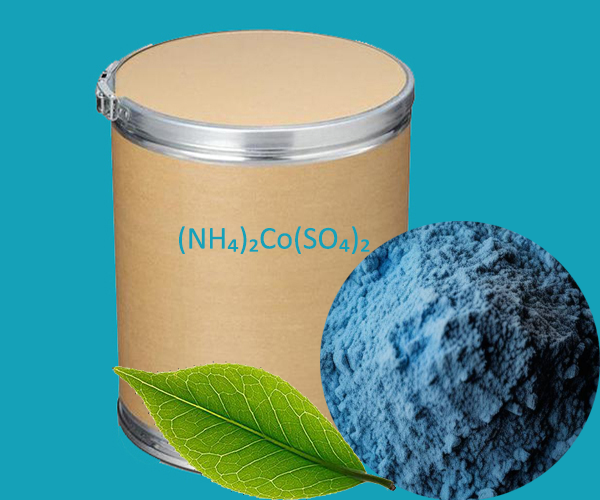Cobalt-ammonium sulfate is an inorganic compound with the chemical formula (NH₄)₂Co(SO₄)₂. It is usually found in the form of hexahydrate, i.e., (NH₄)₂Co(SO₄)₂·6H₂O. It is a blue crystal, sometimes referred to as Moore blue or Saruman blue, because its color is similar to the historical blue pigment Cobalt Blue.
Cobalt-ammonium sulfate can be obtained by reacting soluble cobalt salts with ammonium sulfate solutions. This compound has a vivid blue color in solution, so it is used not only as a chemical reagent but also as an indicator and pigment.
1. Pigment: Cobalt-ammonium sulfate is a blue inorganic pigment used in glass, ceramics and paintings, known for its vivid color and stability.
2. Indicator: In chemical analysis, ammonium cobalt sulfate can be used as an indicator for the detection of sulfate ions and anions in coordination titration.
3. Electroplating: Ammonium cobalt sulfate can be used as part of the electroplating solution to coat a layer of cobalt on the surface of the metal.
4. Catalyst: In some chemical reactions, ammonium cobalt sulfate can be used as a catalyst to promote the reaction.
5. Battery materials: Cobalt-ammonium sulfate can be used in some types of batteries as a component of electrode materials.
6. Biology and Medicine: Cobalt-ammonium sulfate has been used to stain cells in biological research and as a reagent for certain medical tests.
7. Photosensitive materials: Cobalt ammonium sulfate has been used in the preparation of photosensitive materials in the photography and printing industries.
8. Ceramic Materials: Cobalt-ammonium sulfate is used in the production of special types of ceramics, such as electronic ceramics and catalyst carriers.
 English
English Español
Español Português
Português Français
Français Deutsch
Deutsch Русский
Русский 中文
中文 日本語
日本語
